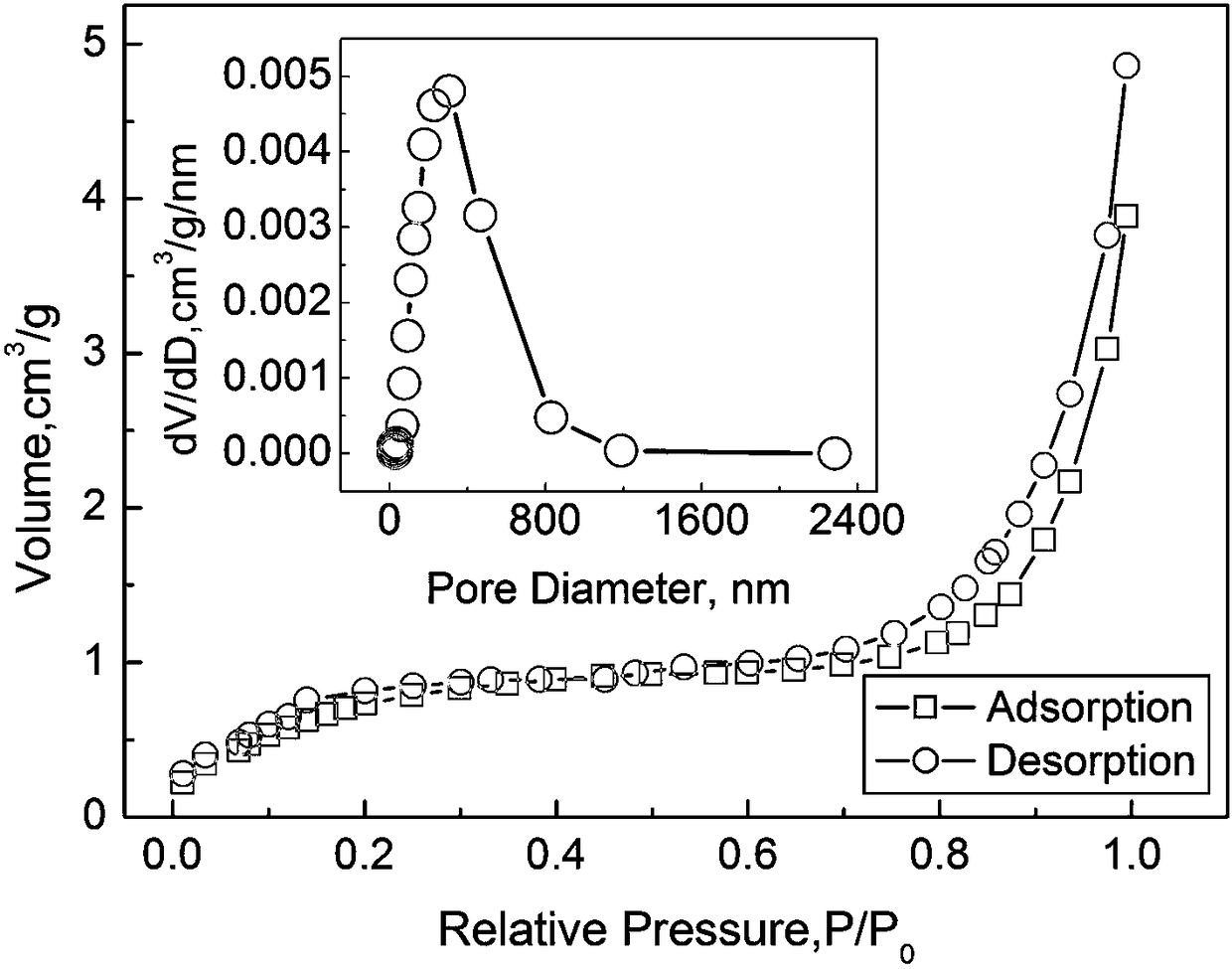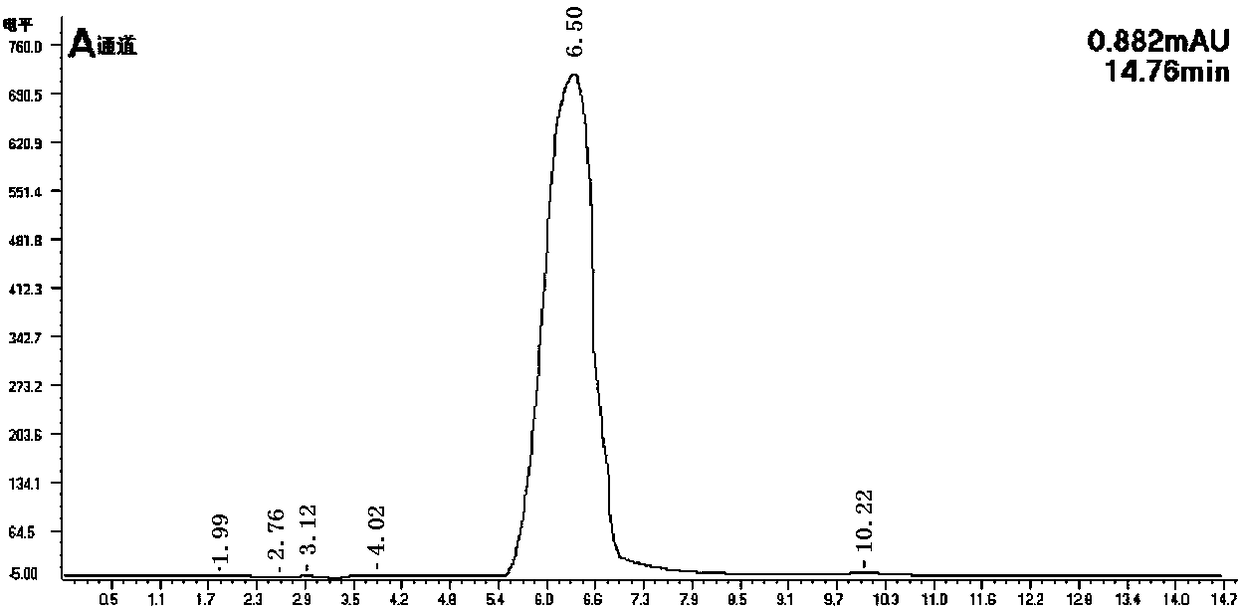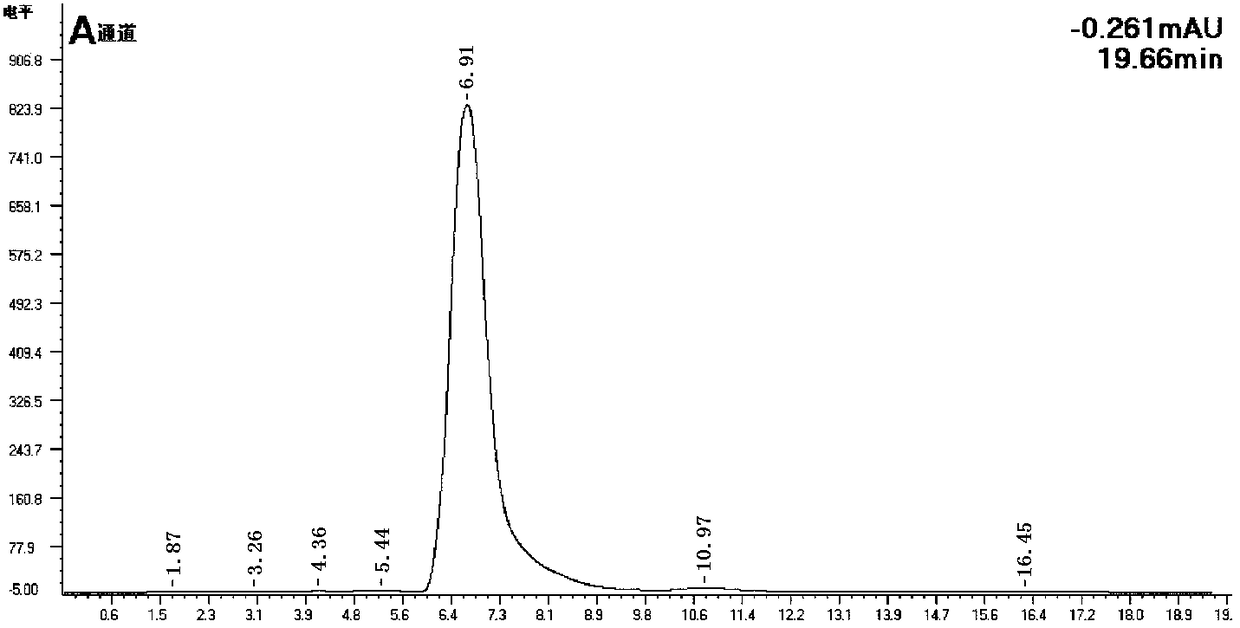Sulfonated vinegar grains, its preparation method and application
A technology for sulfonating vinegar grains and vinegar grains, which is applied to the sulfonation method and the product field prepared by the method, can solve the problems such as the inability of rational application of vinegar grain waste residue, environmental pollution and the like, and achieves the realization of recycling and reusing technology. The process is simple and easy, and the synthesis rate is fast.
- Summary
- Abstract
- Description
- Claims
- Application Information
AI Technical Summary
Problems solved by technology
Method used
Image
Examples
Embodiment 1
[0041] Example 1 Preparation of sulfonated vinegar grains with sulfuric acid as sulfonating agent, the steps are:
[0042] (1) The natural vinegar lees left after the fermentation of aspergillus, yeast, and acetobacter in the solid state are made into vinegar in a solid state, air-dried naturally, and then crushed with a stone mill to a particle size range of 160-180 mesh, and the particles are collected by sieving Graded components, fully rinsed with water to remove free acetic acid, dried, kept the material quality to constant weight, terminated drying, and sampled and analyzed after cooling to calculate the accurate acid value of the solid vinegar grains;
[0043] (2) Accurately weigh 500 g of graded vinegar grains (acid value 0.082 mmol / g) and a certain amount of sulfonating agent. Then add 1 % accelerator (anhydrous aluminum chloride, w / w), spray water (water content 40%, w / w), mix well, put the mixed material into a volatilization porcelain crucible, Close the lid, wrap...
Embodiment 2
[0044] Example 2 Using sodium sulfite as a sulfonating agent to prepare sulfonated vinegar grains, the steps are:
[0045] (1) Same as embodiment 1;
[0046] (2) Accurately weigh 500 g of graded vinegar grains (acid value 0.082 mmol / g) and a certain amount of sulfonating agent. Then add 1 % accelerator (anhydrous ferric chloride, w / w), spray water (water content 40%, w / w), mix well, put the mixed material into a volatilization porcelain crucible, Close the lid, wrap the crucible with red mud, bake in an oven at 150 ºC for 5 hours, stop heating and cool down; wash the sample with distilled water until the pH of the filtrate reaches 7, collect the filtrate, dry the solid sulfonated vinegar grains, and obtain the final product.
Embodiment 3
[0047] Example 3 Prepare sulfonated vinegar grains with sodium sulfamate as sulfonating agent, the steps are:
[0048] (1) Same as embodiment 1;
[0049] (2) Accurately weigh 500 g of graded vinegar grains (acid value 0.082 mmol / g) and a certain amount of sulfonating agent. Then add 1 % accelerator (anhydrous aluminum chloride, w / w), spray water (water content 40%, w / w), mix well, put the mixed material into a volatilization porcelain crucible, Close the lid, wrap the crucible with red mud, put it in an oven at 150 ºC for 5 h, stop heating and cool down; wash the sample with distilled water, and dry it at 60 ºC for 30 min.
PUM
| Property | Measurement | Unit |
|---|---|---|
| particle size | aaaaa | aaaaa |
| specific surface area | aaaaa | aaaaa |
| pore size | aaaaa | aaaaa |
Abstract
Description
Claims
Application Information
 Login to View More
Login to View More - R&D
- Intellectual Property
- Life Sciences
- Materials
- Tech Scout
- Unparalleled Data Quality
- Higher Quality Content
- 60% Fewer Hallucinations
Browse by: Latest US Patents, China's latest patents, Technical Efficacy Thesaurus, Application Domain, Technology Topic, Popular Technical Reports.
© 2025 PatSnap. All rights reserved.Legal|Privacy policy|Modern Slavery Act Transparency Statement|Sitemap|About US| Contact US: help@patsnap.com



